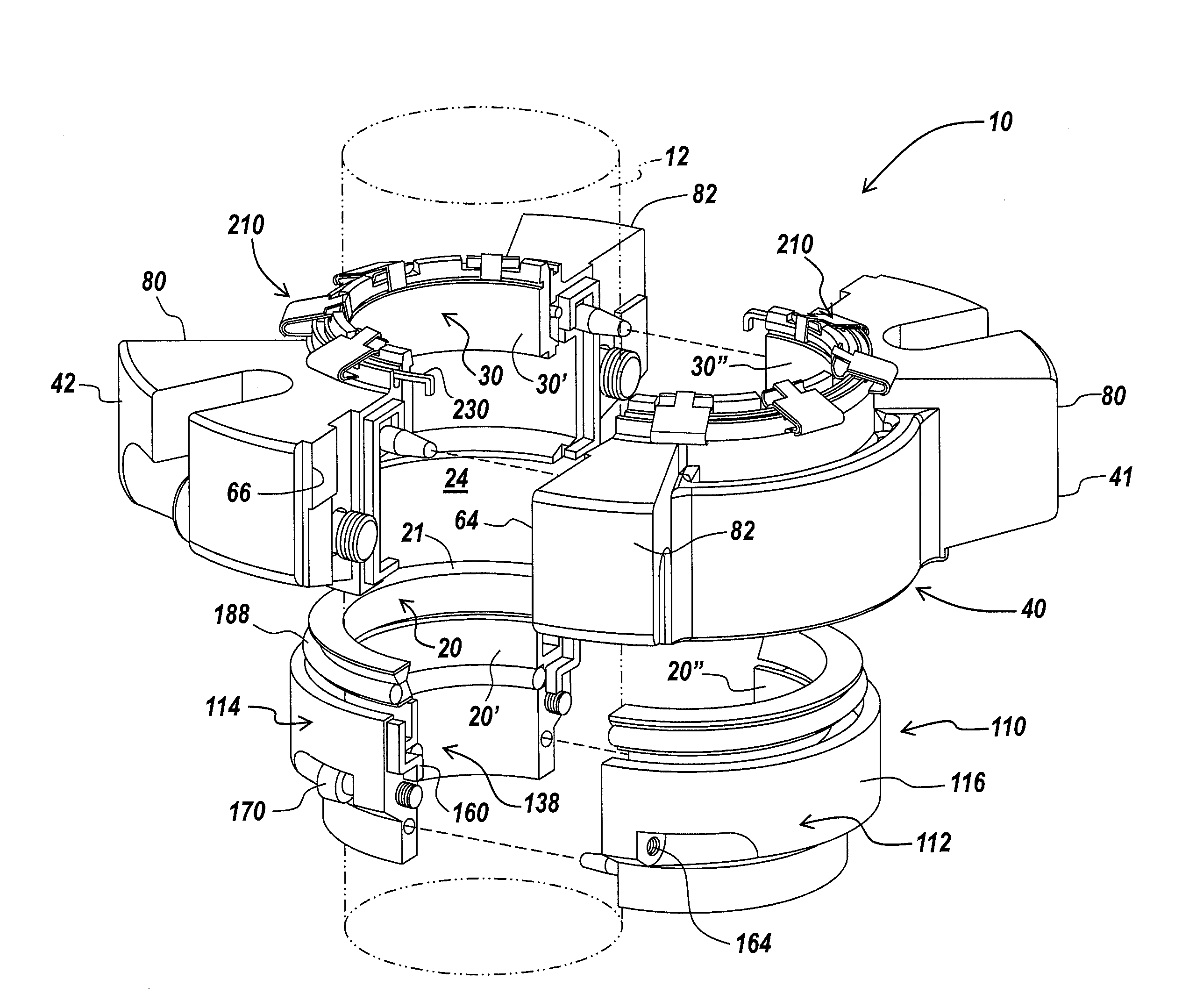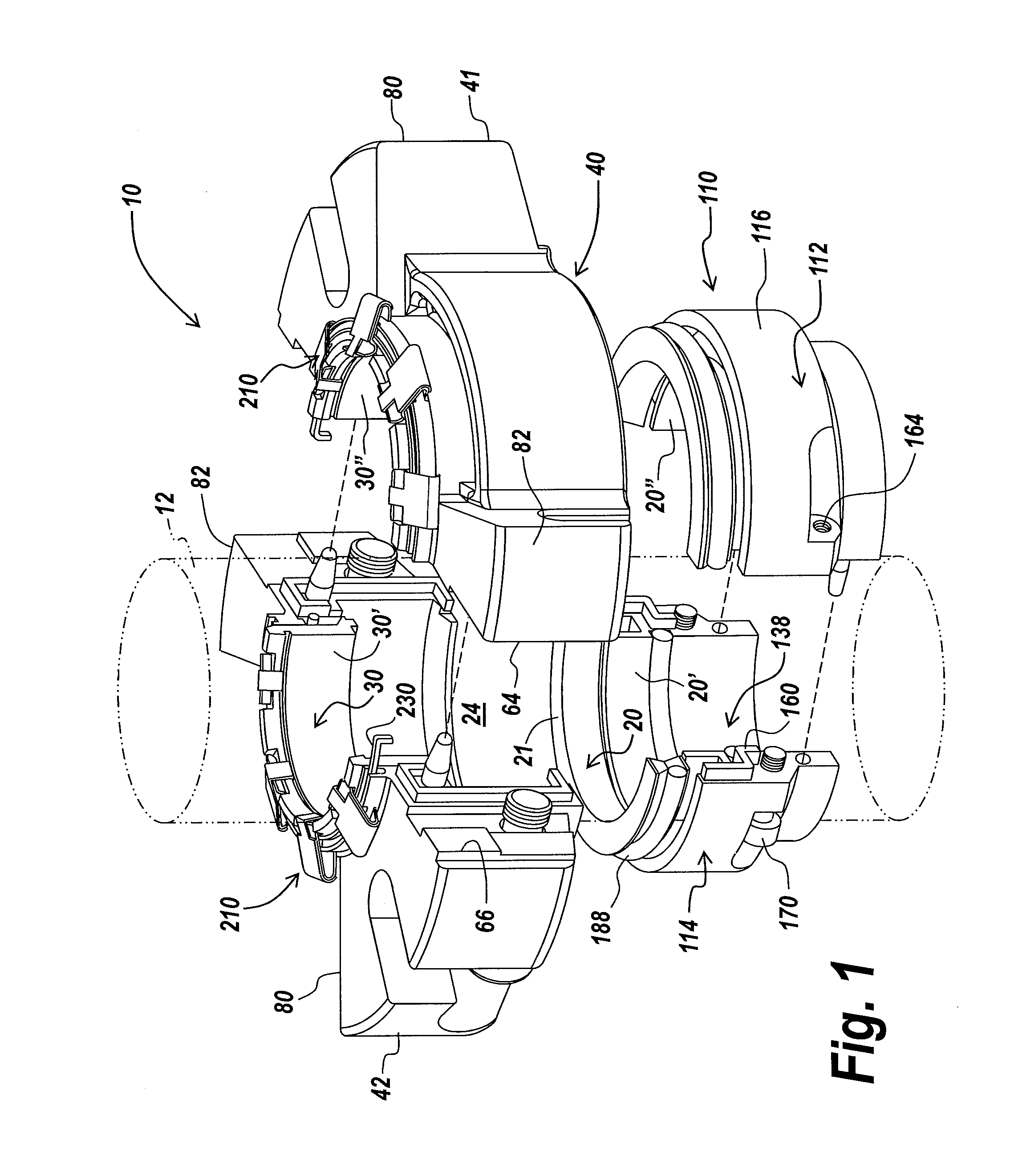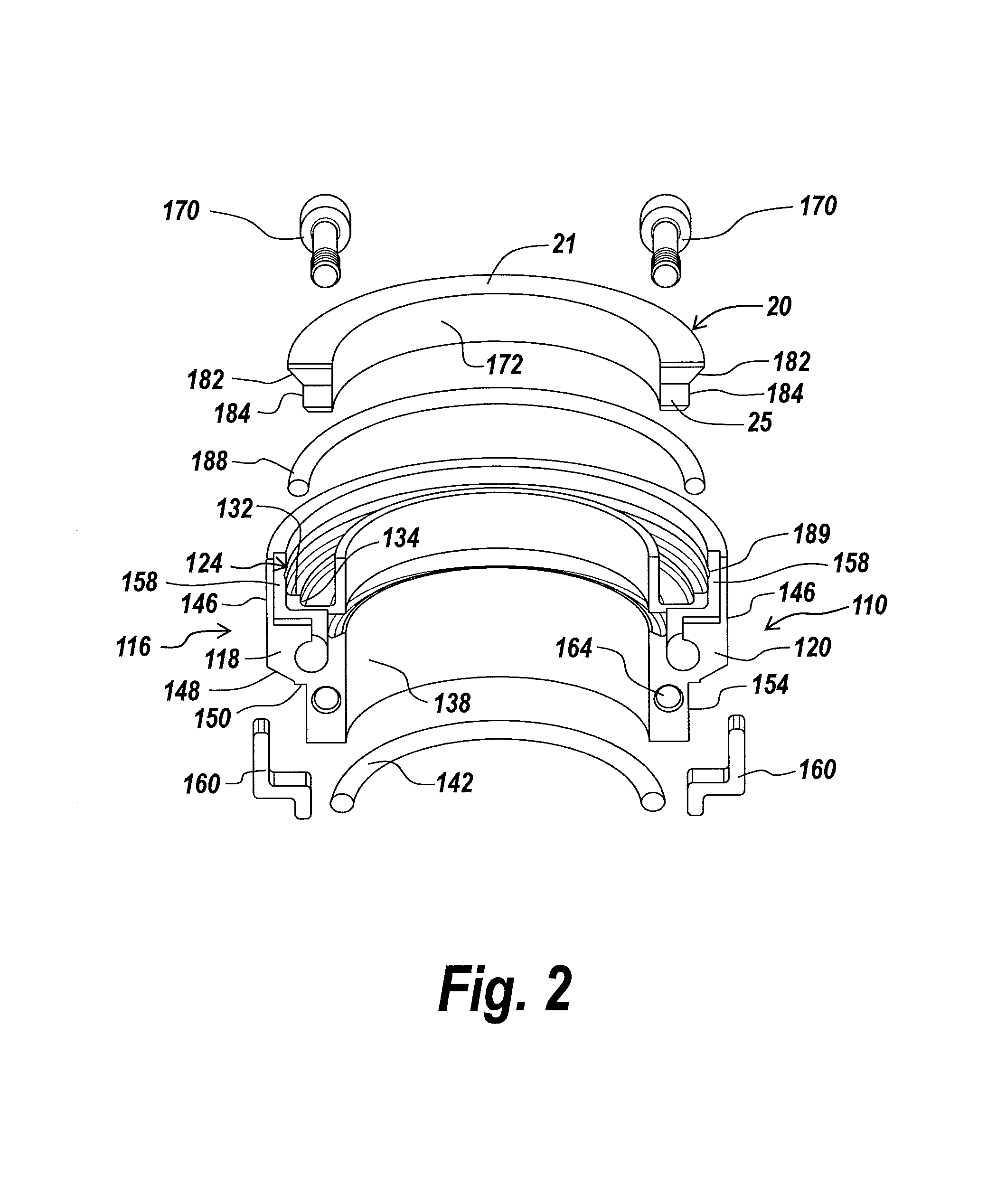Self aligning split mechanical seal employing a selectively engageable axial biasing assembly
a split mechanical seal and selective engagement technology, applied in the field of sealing assemblies, can solve the problems of difficulty often encountered, prior art split mechanical seal assembly designs posed several problems, and the rotary seal face of prior art mechanical seal assembly designs has a tendency to pop out after being inserted, so as to achieve convenient relative alignment
- Summary
- Abstract
- Description
- Claims
- Application Information
AI Technical Summary
Benefits of technology
Problems solved by technology
Method used
Image
Examples
Embodiment Construction
[0036]The present invention provides a mechanical seal assembly for providing sealing on a rotating shaft or other suitable device. The invention will be described below relative to illustrated embodiments. Those skilled in the art will appreciate that the present invention may be implemented in a number of different applications and embodiments and is not specifically limited in its application to the particular embodiment depicted herein.
[0037]The terms “seal assembly” and “sealing assembly” as used herein are intended to include various types of sealing assemblies, including single seals, split seals, concentric seals, spiral seals, and other known seal and sealing assembly types and configurations.
[0038]The term “shaft” is intended to refer to any suitable device in a mechanical system to which a seal can be mounted and includes shafts, rods and other known devices.
[0039]The terms “axial” and “axially” used herein refer to a direction generally parallel to the axis of a shaft. T...
PUM
| Property | Measurement | Unit |
|---|---|---|
| obtuse angle | aaaaa | aaaaa |
| obtuse angle | aaaaa | aaaaa |
| angle | aaaaa | aaaaa |
Abstract
Description
Claims
Application Information
 Login to View More
Login to View More - R&D
- Intellectual Property
- Life Sciences
- Materials
- Tech Scout
- Unparalleled Data Quality
- Higher Quality Content
- 60% Fewer Hallucinations
Browse by: Latest US Patents, China's latest patents, Technical Efficacy Thesaurus, Application Domain, Technology Topic, Popular Technical Reports.
© 2025 PatSnap. All rights reserved.Legal|Privacy policy|Modern Slavery Act Transparency Statement|Sitemap|About US| Contact US: help@patsnap.com



